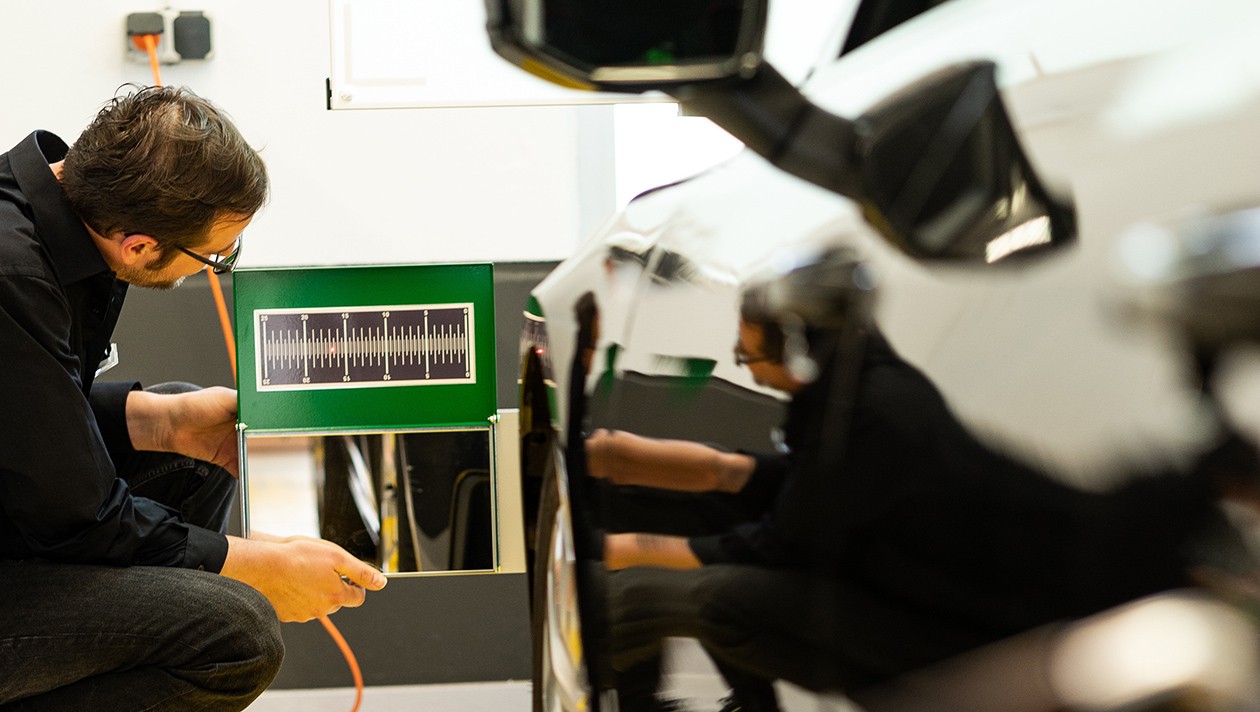Modern cars can do more and more. Safety, comfort and connectivity improve year after year. But that has its price – as you will find out at the latest when you visit the workshop. Three examples of the technical challenges that progress brings.
With the increasing spread of assistance systems, cars are becoming safer and safer. But even if the consequences of accidents caused by emergency braking systems and collision warning systems are often less serious today than they used to be, this does not mean that repair costs are also falling as a result. In its study “Automated Driving – Effects on Claims Expenditure by 2040”, the General Association of the German Insurance Industry (GDV) predicts only a moderate decline in compensation payments by its members for the next two decades. Compared to the total benefit of 25 billion euros in 2019 a decline of just 12 percent is forecast for 2040. Compensation in liability insurance could fall by 17 percent, while comprehensive insurance – which regulates damage to one’s own car – is expected to fall by just 7 percent. Of course, the absolute figures do not apply to Austria, but the relative figures should also be roughly up-to-date in this country.Some things drive you up costsThe study cites several factors as reasons for the surprisingly moderate decline. The most important: The additional technology for the new assistance systems drives up the costs of repair services. In the past, in the best case scenario, only the dented bumper had to be replaced in the event of a rear-end collision. Today, a whole arsenal of sensors in the radiator grille is quickly affected. Without a parking beeper at the front, almost only small cars are on the road today. Many cars also have a radar, and particularly high-quality ones also have a lidar. The price of parts alone quickly reaches the four-digit range. The front of the vehicle is not the only sensitive part of the car. It is also expensive, for example, with a broken windshield: it is 25 percent more expensive in cars with assistance systems, as determined by the GDV. In general, the simple glass plate has developed into a high-tech component – with the corresponding costs. Around half of the car glasses in Europe now have noise insulation, as the workshop chain Carglass has calculated. 40 percent offer heat protection. There is also growth in heating and head-up displays. However, the preparations for assistance systems have increased in particular: Almost all new cars have one to three front cameras, which are mounted in a special housing behind the windshield. In addition to the costs caused by the higher production requirements, the time required is also increasing when replacing a defective item. If there is a camera behind the pane, for example for the lane departure warning system or the distance cruise control, it must be recalibrated. Otherwise, in extreme cases, the vehicle may involuntarily steer into oncoming traffic after around 100 meters without the driver having to intervene, Carglass warns. The company has therefore developed its own calibration process, which is being used in more and more vehicles after the windscreen has been replaced. New production methods such as so-called giga-casting also pose completely new challenges. The chassis is no longer assembled from a good 70 individual components, but manufactured straight away as a coherent part. This reduces production costs, but increases the cost of repairs. “Large cast parts have to be completely replaced in the event of damage,” says Jürgen Redlich, Head of Automotive Technology, Operations and Damage at GDV, to the magazine “Auto Verkehr”. Unless the manufacturer develops a repair concept that specifies how these parts can be repaired using processes that can be mastered in repair shops. What is specifically meant in this case is the electric car manufacturer Tesla, which has already started to switch to giga casting in Grünheide – and has not yet presented a repair concept. However, the Americans are not the only ones who rely on large cast parts – also Volvo and Toyota have announced at least partial use. Whether and to what extent the insurance rates for giga-casting cars will increase will only become apparent when a sufficient number are on the road and are involved in accidents. For the Tesla Model Y, the GDV expects meaningful data for the coming year. (SPX)
source site-13
